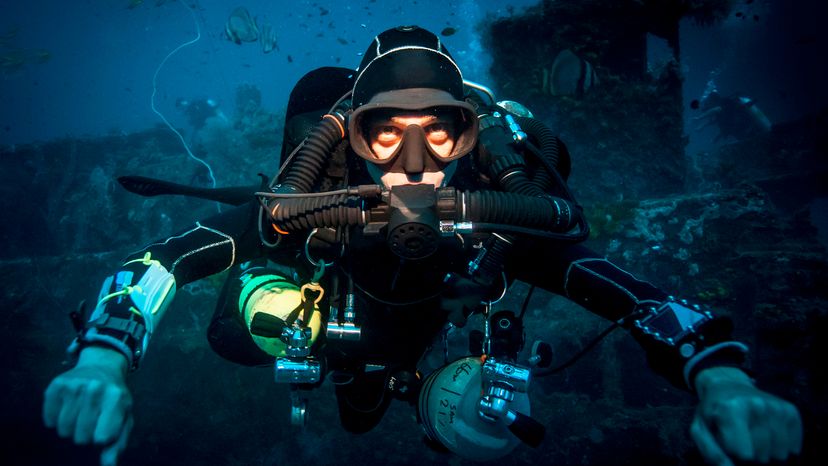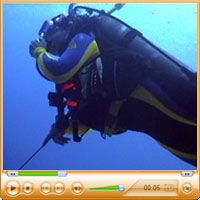
SCUBA stands for self-contained underwater breathing apparatus. When using SCUBA equipment, a diver breathes from a tank that holds highly compressed air.
SCUBA diving is different from holding your breath and diving, and to understand the difference you need to understand the incredible pressures that a diver's body experiences. When we are living on dry land at sea level, the air around us has a pressure of 14.7 PSI (pounds per square inch), or 1 atmosphere. That is a "normal pressure" for our bodies. Because water is so heavy compared to air, it does not take much water to exert a lot of pressure. For example, a 1-inch by 1-inch column of water 33 feet high exerts another 14.7 PSI.
Advertisement
If you hold your breath and dive down 33 feet (10 meters), therefore, your lungs actually contract in size by a factor of two. They have to -- there is twice as much pressure around the air in your lungs, so they contract. When you rise back up the air expands again, so your lungs return to normal size.
When you breathe from a SCUBA tank, the air coming out of the tank actually has the same pressure as the pressure that the water is exerting. It has to, or it won't come out of the tank. Therefore, when SCUBA diving, the air in your lungs at a 33-foot depth has twice the pressure of air on land. At 66 feet, it has three times the pressure. At 99 feet, it has four times the pressure, and so on.
When high-pressure gases in the air come in contact with water, they dissolve into the water. This is how carbonated beverages are made. To make carbonated water, water is exposed to high-pressure carbon dioxide gas, and the gas dissolves into the water. We all know what happens when you release the pressure in a bottle of soda -- bubbles suddenly start rising. The gas dissolved in the water at high-pressure comes out of the liquid when the pressure is released, and we see it as bubbles.
Advertisement
